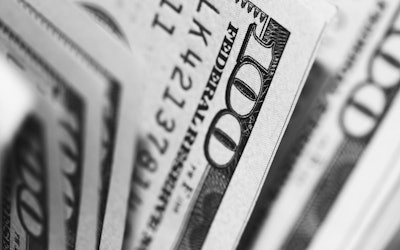
Last month, we discussed various pricing methods, and how aggressive pricing models do not necessarily generate operating losses if one controls costs in sync with aggressive pricing to generate a profit. What this all means is a company or manager must know the costs he/she will incur for the billing dollars being generated. If you know your costs, you can work backwards to arrive at revenue numbers that will produce desired profit and returns satisfactory to management.
The problem is related to costs and how to determine revenue levels required to generate suitable profits. Cost means different things when performing this analysis. There are costs that are fixed and semi-fixed, and there are costs that are variable directly associated with the production of revenue.
Cut Fixed Costs for More Profit
Fixed costs are just that — fixed. They are there whether you are doing any business or not and need to be 100% absorbed by gross profits before you make a dime.
In other words, if you have $1 million in fixed costs, you would need to make 30% profit on your work (billing minus variable costs to complete the job), or $3.3 million, just to cover fixed costs ($3,300,000 x 30% = roughly $1,000,000). That $3.3 million of billing is your break-even billing amount; after that is when you start making a dollar. Add another $3 million of billing on top of it during the period and you will actually make $1 million.
Fixed costs may be fixed for the income period being considered, but they are not 100% fixed since you can change them by making fixed expenses semi-fixed or more variable. If you can reduce fixed costs, the billing required to earn that $1 million profit is much easier to attain.
Get a Handle on Your Costs of Doing Business to Make a Profit
Fixed costs represent fixed payments or long-term contract payments such as rent, utilities, equipment leases, building costs and basic management comp that will be incurred no matter what happens. How can you reduce these costs and still be able to run your business? Simple. Shorten up the contracts and outsource functions that are now semi-fixed or fixed in nature. In short, run a lean ship and avoid fixed costs like the plague. For example:
- Avoid owning or renting a complex larger than you need.
- Stop buying or leasing equipment and trucks with long-term contracts.
- Outsource trucking and services that are not your area of expertise.
- Rent what your can when you can.
Take these steps and I guarantee your fixed costs and semi-fixed costs will fall, giving you more flexibility with pricing or, if pricing stays the same, the ability to stay afloat with a lower volume of work. You want to concentrate on only paying for people and services when you need them, turning fixed costs into variable costs. This is the reason I keep harping on renting vs. buying construction equipment where you can rent the required utility value only for the period needed.
Incentive to Break Even Sooner
Fixed costs are charged out to every job either as a direct charge or through an overhead charge. If they are part of an overhead charge, there is no need to adjust the job costs to separate out the fixed costs.
But in some cases, fixed costs are part of the direct job costing, such as an hourly charge for equipment or trucking, which must be adjusted out of the equation when calculating variable costs. What you need to wind up with is a number for fixed costs and variable costs, which allows the calculation to determine the billing needed to break even.
Billing minus variable costs equals the contribution margin you can apply to fixed costs and subsequently profits once those costs are covered. This could be in March or June or September depending on your overall fixed costs and the pricing you can get for your work.
The later in the year it takes to break even, the lower your potential profits will be. If you can break even in May by cutting back on fixed costs, you now have seven months left to either get aggressive with pricing if needed, or less aggressive if you are not desperate to generate cash to cover fixed costs.
Can You Still Meet Your Margin Goals?
Adjusting to Manage Profit
Managing costs is an ongoing problem. Both fixed and variable costs will change throughout the year with management making the adjustments called for to manage profit. Not being familiar with this process just about guarantees cash-flow problems and credit folks constantly calling for payment.
Management must at least understand which expenditures and contracts add to fixed costs and which don’t. Here’s an example: Say you earn 30% on your jobs. If you buy a new piece of equipment for $100,000, you will have to bill $333,000 over the life of the unit to cover that cost. If you amortize the unit over five years at $20,000 a year, then you need $66,000 of billing to cover the fixed cost of that unit per year. To make the matter more complex, this is assuming the acquisition added a new unit to the fleet without replacing an existing unit, which would change the numbers.
Where this really comes home to roost is during a downturn when you are sweating the cash flow and have unused equipment and facilities that you continue to pay for. So, do yourself a favor — only buy what you really need on a daily basis or what is not readily available for rent. Do the same analysis with people costs.
We will continue to review these concepts next month.



















